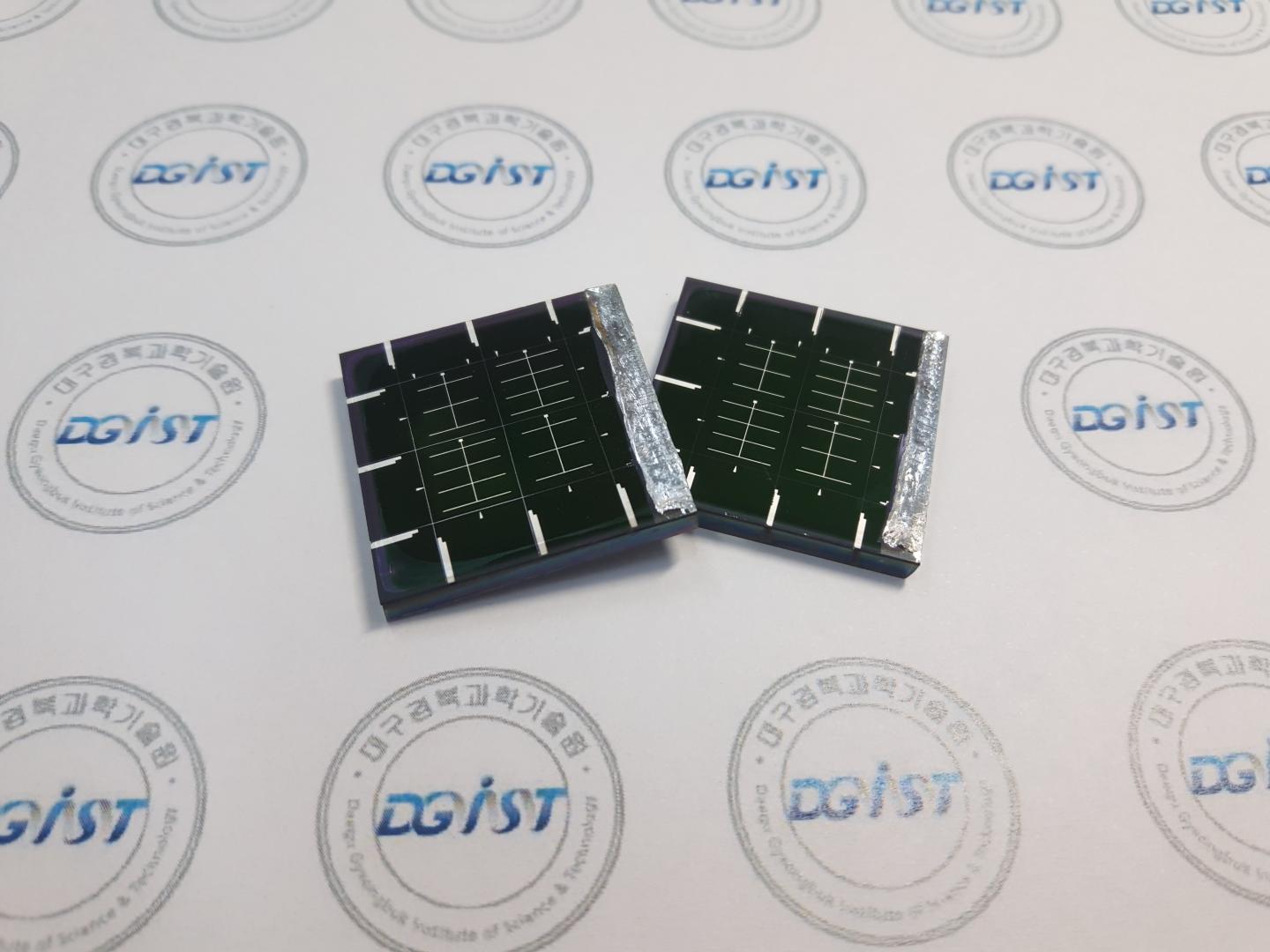Scientists identify a novel method to create efficient alloy-based solar panels free of toxic metals

Credit: DGIST
Commercialized thin-film solar panels on the market consist of rare-earth elements like indium and gallium, or highly toxic metals like cadmium. Both of these thin-film solar panel types have their own problems, such as high-cost and problems in use in living places.
A team of scientists from DGIST, led by Dr Jin-Kyu Kang and Dr Dae-Hwan Kim, has been experimenting with solar panels made from cheaper and more abundant elements. Now, they have published the findings of their latest study in Advanced Energy Materials. Dr Kang elaborates on the reasons based on which they chose their materials for the study: “Thin-film solar cells using bronze (Cu-Sn) and brass (Cu-Zn) as base materials are composed of non-toxic earth-abundant materials, and have been studied worldwide because of their low cost, high durability, and sustainability.”
However, using these alloys in thin film technology has its own drawbacks. While the theoretical efficiency of these panels matches the efficiencies of top market products, in practice, they tend to underperform drastically. This is because of the formation of various defects in the materials, such as “point” defect, “surface” defect, and “volume” defect, during “annealing” (or the process of heating and cooling to make a CZTSSe film). These defects undermine the current flow, resulting in loss of electricity generated.
Therefore, the scientists wanted to find a way to synthesize the best quality CZTSSe (copper, zinc, tin, sulfur, and selenium) thin films. They played around with the annealing profile, which has a strong effect on the grain size of CZTSSe thin film: the longer the annealing time and higher annealing temperature, the larger the grains, and the lesser the electricity loss.
However, as the annealing temperature and time increase, there is a change in the properties of the CZTSSe thin film due to decomposition. To bypass this issue, the team used a special “liquid-assisted method,” which allowed the grains of CZTSSe to grow at a faster rate. This meant that the grains could grow large even at low temperatures, preventing the change in the properties of the CZTSSe thin film.
With this new observation, a significant hurdle has been overcome in the search for low-cost environment-friendly solar energy. Dr Kim concludes, “Our technology has diverse applications, including in electronic devices, household goods, buildings, and vehicles. The best part is that CZTS solar cells are free of the current drawbacks of toxic and rare metals. We can install everywhere we want!”
###
Reference
Authors: Se-Yun Kim1, Dae-Ho Son1,2, Seung-Hyun Kim1, Young-Ill Kim1, Sammi Kim1, Kwangseok Ahn1, Kee-Jeong Yang1,2, Jin-Kyu Kang1,2 and Dae-Hwan Kim1,2
Title of original paper: Effect of Cu-Sn-Se Liquid Phase on Grain Growth and Efficiency of CZTSSe Solar Cells
Journal: Advanced Energy Materials
DOI: 10.1002/aenm.201903173
Affiliations: 1Research Center for Thin Film Solar Cells, Daegu-Gyeongbuk Institute of Science and Technology (DGIST), Daegu 42988, Republic of Korea
2Division of Energy Technology, Daegu-Gyeongbuk Institute of Science and Technology (DGIST), Daegu 42988, Republic of Korea
*Corresponding author’s email: [email protected]; [email protected]
About Daegu Gyeongbuk Institute of Science and Technology (DGIST)
Daegu Gyeongbuk Institute of Science and Technology (DGIST) is a well-known and respected research institute located in Daegu, Republic of Korea. Established in 2004 by the Korean Government, the main aim of DGIST is to promote national science and technology, as well as to boost the local economy.
With a vision of “Changing the world through convergence”, DGIST has undertaken a wide range of research in various fields of science and technology. DGIST has embraced a multidisciplinary approach to research and undertaken intensive studies in some of today’s most vital fields. DGIST also has state-of-the-art-infrastructure to enable cutting-edge research in materials science, robotics, cognitive sciences, and communication engineering.
Website: https:/
About the authors
Dr Jin-Kyu Kang is a principal researcher at the DGIST, Korea since 2005. He received his PhD degree in chemical engineering from POSTECH in 2000. He joined Samsung Electronics, and led the research about low-temperature poly-Si TFT- LCD. His research is focused on developing and characterizing for thin-film solar cells (CIGS, CZTS, DSSC).
Dr Dae-Hwan Kim is a researcher at DGIST and has been a part of the institution since 2005. He received his PhD degree from Department of Chemical Engineering, POSTECH, KOREA in 2002. From 2002, he worked at Samsung Electronics’ Semiconductor R&D Business and invented the lean-free MESH capacitor process for 80nm or less scale DRAM. His research interests include oxide thin-film transistors and thin-film solar cells.
Media Contact
Kwanghoon Choi
[email protected]
Original Source
https:/
Related Journal Article
http://dx.





